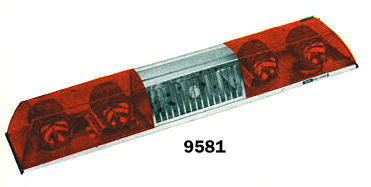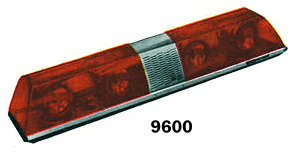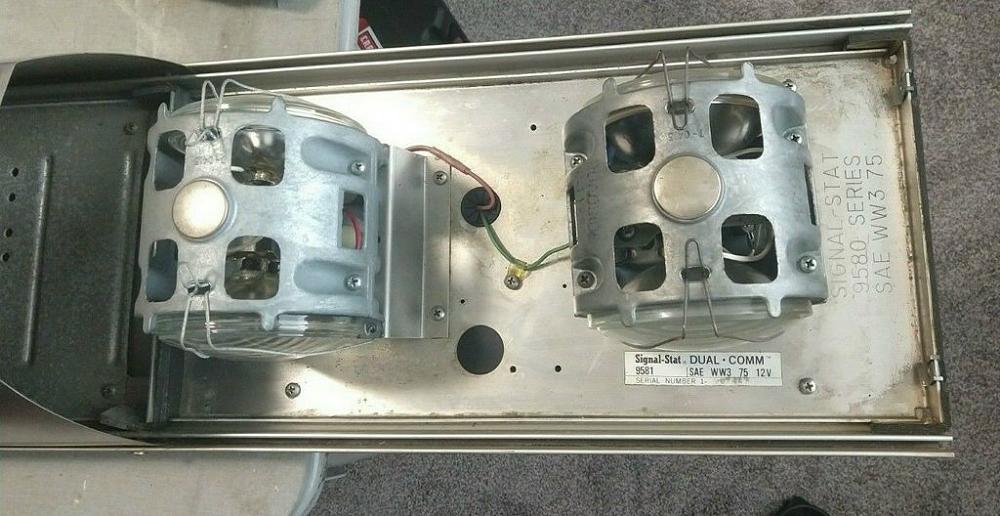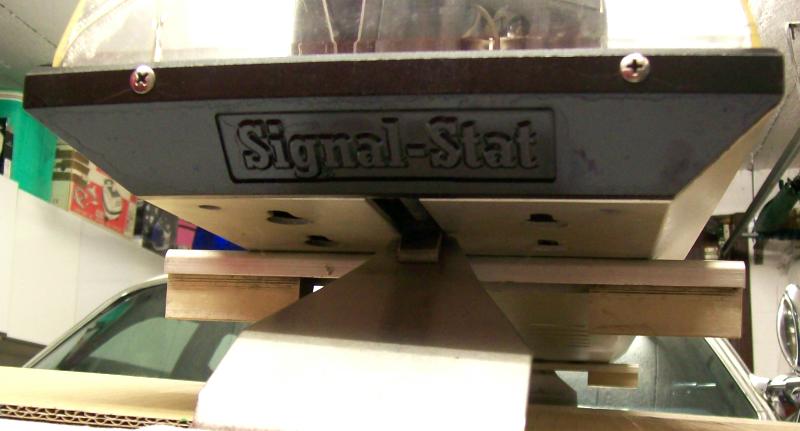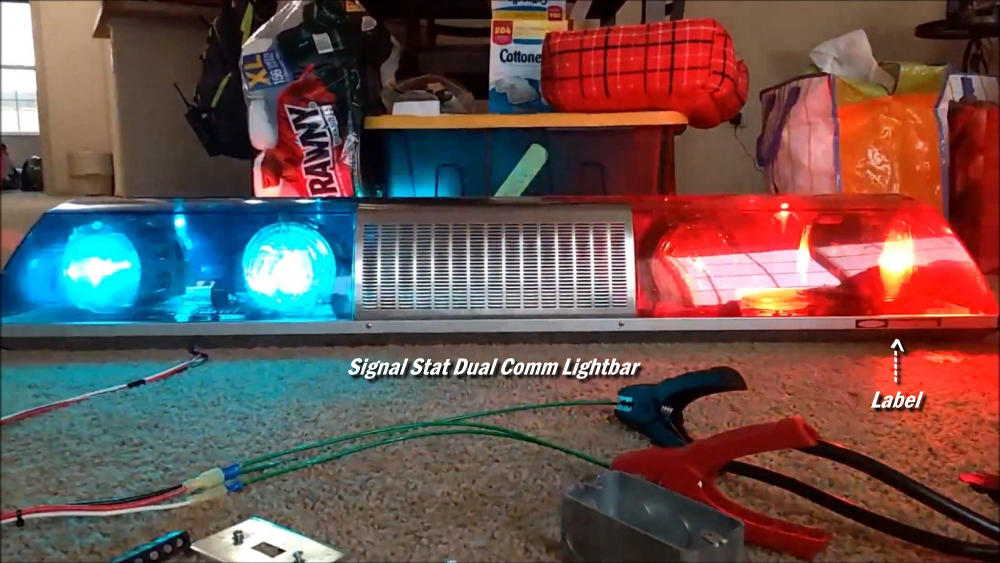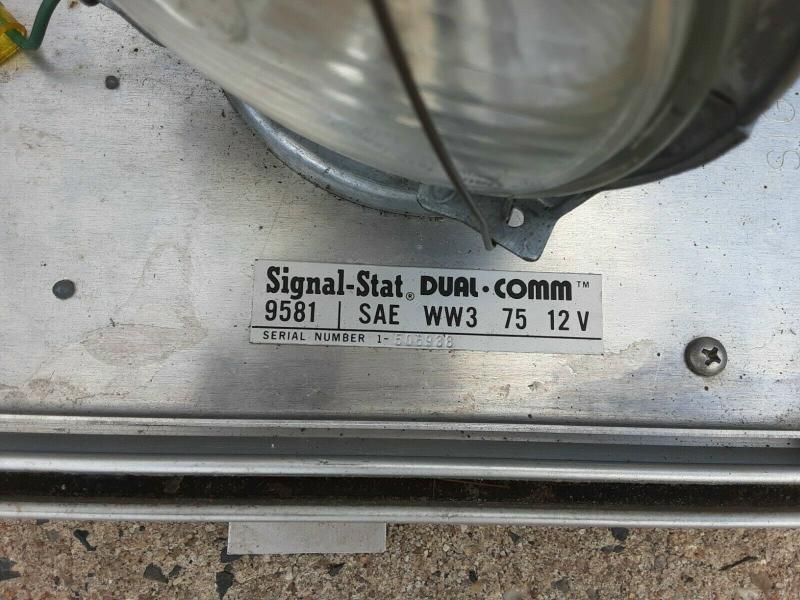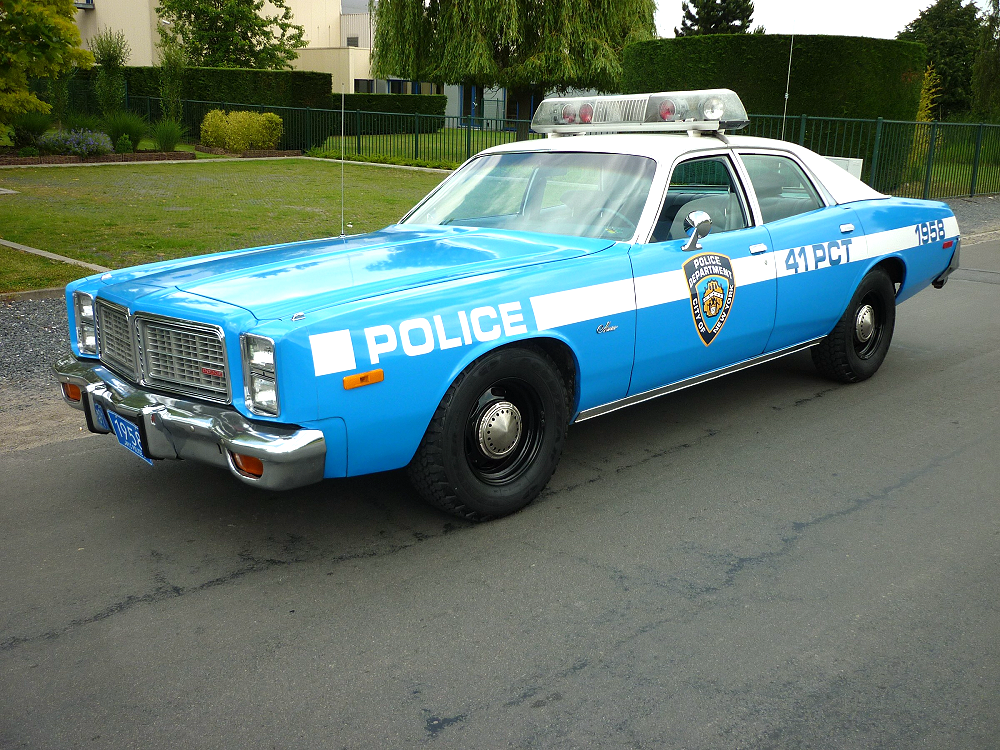Features:
-
- Two separate motors, easy maintenance, contemporary styling, low wind resistance.
- Polycarbonate domes.
- Anodized tempered aluminum base.
- Stainless steel mounting hardware.
- Compatible with any existing electronic siren system.
- Self-lubricating gear drive.
- Easy to service.
- Speakers, Harness and Mounting Hardware not included; order as required.
- Size: 52″ long, 10″ wide and 8″ high
Signal-Stat Dual Comm Models:
Signal-Stat Model 9580:
Unit consists of two, (2) sealed beam revolving lamp assemblies. Red domes with clear sealed beams standard. Blue/Blue domes shown, other color combinations are available. Amperage draw: 16 Amps
Signal-Stat Model 9581:
Unit consists of two (2) sealed beam revolving lamps and two, stationary, double face, alternating flash sealed beam lamps and built-in alternating flasher. Red/Red standard shown, other color combinations are available. Amperage draw: 16 Amps.
Signal-Stat Model 9584
Unit consists of two, (2) sealed beam revolving lamps and two alternating flashing lamps to rear. Amber/Amber domes standard. Built-in flasher. Meets California requirements for wreckers. Rear view shown. Amperage draw: 13 Amps.
Signal-Stat Model 9600
Mini – Same as 951 except only 43″ long, to fit compact vehicles.
Signal-Stat Dual Comm Replacement Parts:
Dome: 9099
Motor: 373
Sealed Beams: 5-7400
Flasher: 537
Revolving Light Assembly Road – 9511
Revolving Light Assembly Curb – 9576
Note that the revolving lights are identified as ‘Road’ and ‘Curb’. Each rotates a different direction. The drivers side rotates to the left, and the passenger side rotates to the right. My guess would be that ‘Road’ refers to the drives side and ‘Curb’ refers to the passenger side.
Ordering Information:
Voltage: 12V standard
Dome Colors: Red standard, add suffix A (Amber), B (Blue), or W (White/Clear). When two different lens colors are desired, add the two dome color initials after the part number. The first initial will indicate curbside, the second roadside.
Sealed Beams: White Standard
The Internals:
Here you can see the inboard stationary flashers and the outboard rotator. Both are equipped with PAR-36 bulbs. These rotators have their own motor, and each spins a different direction.
Here you can see the lightbar wiring and the relay for the flashes. The wiring for the other side of the lightbar passes underneath the tray that the light assemblies sit on.
How To Identify A Signal-Stat Dual Comm:
The Signal-Stat Dual Comm will have plastic endcaps with “Signal-Stat” molded into them. These become brittle and break over time, so someone may have replaced them with something else.
On the front there will be a Signal-Stat label on the drivers side of the light bar frame.
On the inside there will be a Signal-Stat label with the model number.
They also have ‘Series’ engraved in the base.
Signal-Stat -vs- Dual Comm Speaker Grill
Another quick way to spot a Signal-Stat Dual Comm in photos is by the grill. The slots in the Signal-Stat grill are all evenly space:
(Signal-Stat Dual Comm speaker grill)
The slots in the Yankee / Dietz lightbars have staggered slots:
(Yankee / Dietz speaker grill)
Signal-Stat & Dietz Rotator Differences
Signal-Stat had four (4) different versions of rotators:
Dietz and Signal-Stat rotators are very similar in appearance and even share the same bolt pattern on the mounting plate, but the Dietz rotator is threaded whereas the Signal-Stat rotator is not.
Dietz rotators have two different speed motors (slow/fast) and only rotated one direction. Signal-Stat had only one rotation speed, but in all but the earliest and latest (last) generation could be wired to counter-rotate.
Dietz rotators have twin heat “chimneys” in the top of the can–and now it gets even more complicated. The early Signal-Stat cans were completely enclosed causing heat buildup and motor failure (and they weren’t the most robust motors, either). Then they cast holes in the can for ventilation (didn’t help the puny motors much), isolated the motor from the chassis for counter-rotation and moved the gears from top/inside of the can the the bottom/outside the can (1st-3rd generation). The last generation was an open frame holder with a bigger motor–think Dietz 211 with only 2 bulbs.
New York Police Department:
One of the most notable and collectible Signal-Stat Dual Comm’s are the ones used by the New York City Police Department (NYPD). These lightbars had clear lenses with rotators that had (1) red bulb and (1) clear bulb. The stationary flashers were red in the front, and amber in the rear.
Videos:



